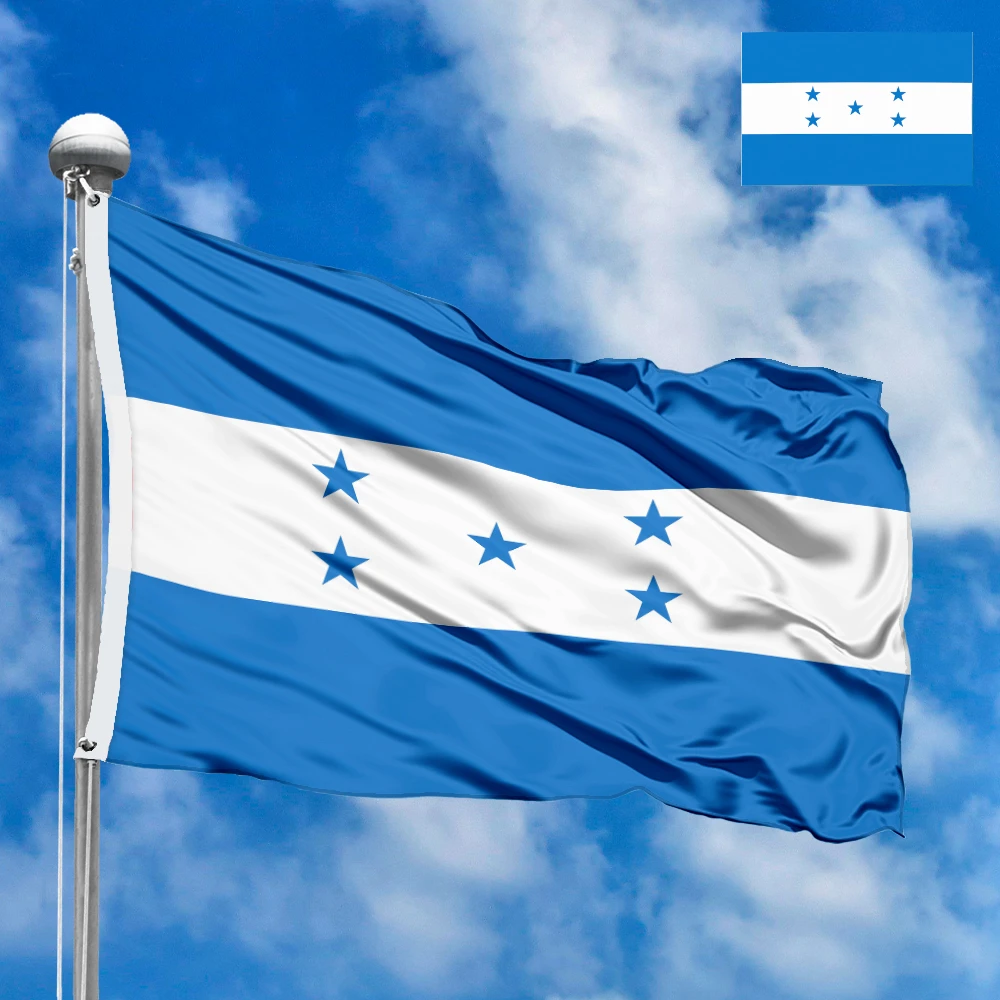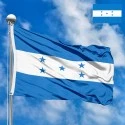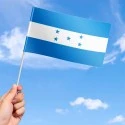The national flag of Honduras is a powerful symbol of the nation's history, geography, and aspirations for regional unity. Its design is based on the flag of the former Federal Republic of Central America, a union of five nations that existed in the 19th century. The flag is a source of national pride, representing the country's unique position between two oceans and its enduring hope for a unified Central American future.
A Detailed Look at the Flag's Design and Symbolism
The flag of Honduras consists of three equal horizontal stripes. The top and bottom stripes are cyan, while the middle stripe is white. Centered on the white stripe are five cyan five-pointed stars, arranged in an X-pattern. The flag's design is simple yet deeply symbolic, with each element telling a part of the Honduran story.
Each color and element on the flag is deeply symbolic, reflecting the core principles of the Honduran nation:
-
Cyan: The two cyan stripes at the top and bottom of the flag represent the Pacific Ocean and the Caribbean Sea, which border Honduras. They also symbolize the blue sky and the brotherhood of the Honduran people. The color was officially changed from a darker blue to a lighter cyan in 2022 to more accurately reflect the original flag of the Central American federation.
-
White: The central white stripe symbolizes the land of Honduras, nestled between the two great oceans. It represents peace, prosperity, and the purity of thought of its people. The white stripe is a visual representation of the nation’s commitment to a peaceful and just society.
-
The Five Stars: The five cyan stars represent the five nations of the former Federal Republic of Central America: El Salvador, Costa Rica, Nicaragua, Guatemala, and Honduras. Their arrangement in a quincuncial (X-shaped) pattern symbolizes the hope and aspiration that these nations may one day reunite and form a union again.
Dimensions and Proportions
The official flag of Honduras has a width-to-length ratio of 1:2. The three horizontal stripes are of equal width, and the five stars are perfectly centered on the white stripe. The design has remained consistent for decades, with the most notable recent change being the official adoption of a lighter blue color in 2022 to align with historical precedent.
The Genesis and Adoption of the Flag
The current flag of Honduras was adopted on February 16, 1866. Its design was inspired by the flag of the United Provinces of Central America, which was in use from 1823 until 1838. After the federation dissolved, Honduras, like other member states, continued to use the blue-white-blue triband. The five stars were added in 1866 to specifically represent the five former member nations and their hope for future unity. The most recent modification to the flag occurred on January 27, 2022, when the official color was changed from navy blue to cyan to honor the original color of the federation's flag.
Meaning and Significance for Citizens
For the people of Honduras, the flag is a cherished emblem of their nation’s identity and a symbol of their unity and resilience. It is a powerful reminder of their shared history with other Central American countries and their aspirations for a prosperous future. The flag is proudly displayed on government buildings, schools, and homes, especially during national holidays like Independence Day on September 15th. The flag’s imagery, with its references to the country's geography and its historical ties, resonates deeply with the population, strengthening their connection to their homeland.
Interesting Facts
-
The flag of Honduras is one of several Central American flags that use the same blue-white-blue color scheme, including those of El Salvador, Nicaragua, and Guatemala, all of which are based on the flag of the former federation.
-
The five stars are sometimes interpreted as forming the letter "H" for Honduras, though their primary meaning is to represent the five Central American nations.
-
The official change to the cyan color in 2022 was initiated by the government of President Xiomara Castro, who sought to honor the historical roots of the flag.
-
The flag's design has a distinct civil ensign, which features the country's coat of arms in the center of the white stripe.
-
The flag is a source of immense national pride and is a central part of the nation's cultural and political identity.
In summary, the flag of Honduras is a masterpiece of symbolic design. Its colors and emblems tell a comprehensive and moving story of a nation’s geography, its rich history, and its enduring values. It is a powerful emblem of national identity, a reminder of its unique place in the world, and a source of profound pride for all Hondurans.
In the demonstration images, full-size flags are shown with proportions of 2:3, and hand-held flags with proportions of 1:2.








 Waving flag
Waving flag
 Sizes:
Sizes:
 Round flag
Round flag
 Sizes:
Sizes:
 Rectangular flag 2:3
Rectangular flag 2:3
 Sizes:
Sizes: